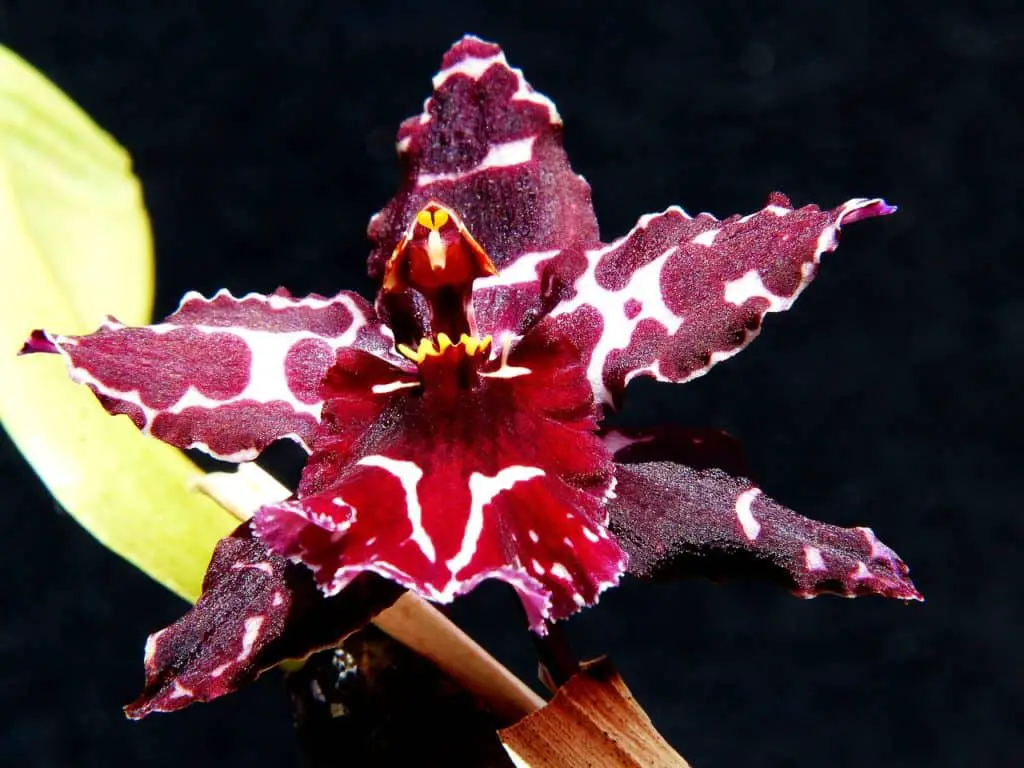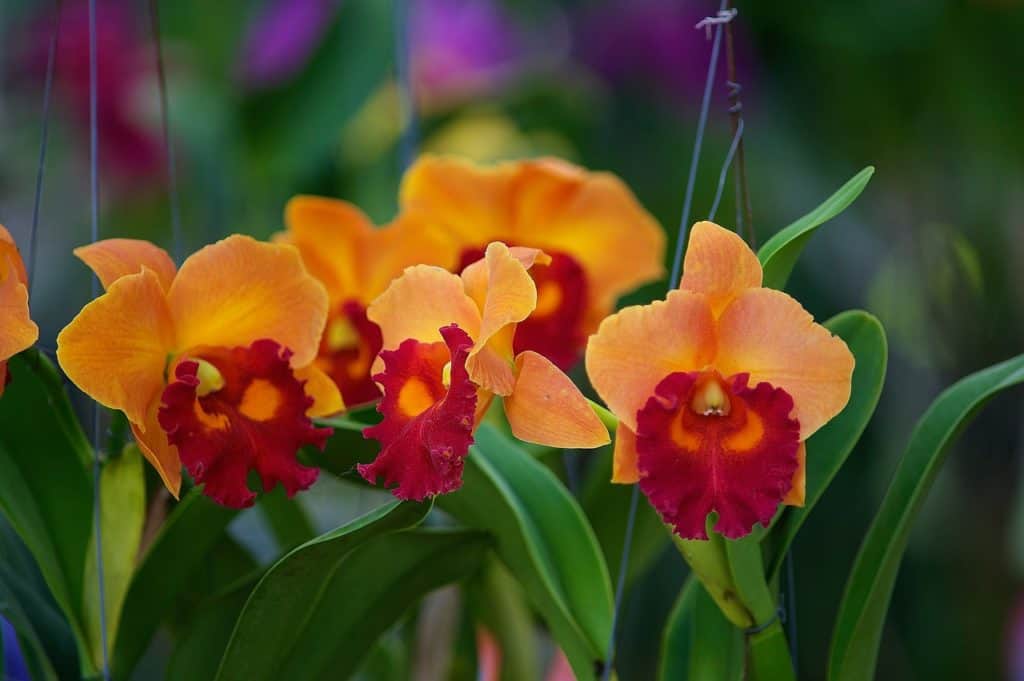Classification Of Orchids
There are certain rules that apply when naming any type of plant, including orchid plants. Most plants are named using just a genus name and a species name as per the International Code of Botanical Nomenclature (ICBN), but in the case of orchids, there are more rules that have to be heeded since there can be so many hybrids of one particular orchid plant. Each and every orchid hybrid requires a hybrid name. This therefore results in the fact that orchids are also subject to the International Code of Nomenclature for Cultivated Plants (ICNCP).
In describing an orchid plant, the genus or species name is followed by a unique name which serves as unique identification. Most commonly, this name is given by the botanist who describes the plant. The plant is classified according to a hierarchical system in botany. Every higher rank, such as a family or order, is likely to be made up of many subordinate groups that are likely to share certain characteristics. Generally speaking, orchid classification is an attempt to put into context the many species and gain a better understanding of them. Orchids, for example, have been divided into groups by an artificial classification system that can assist a cultivator in identifying unfamiliar plants and also giving advice on how to care and grow those plants. There are several artificial classification schemes, including terrestrial, epiphytic, cool- or warm-growing, etc.

Climate conditions
There are several types of orchids, each categorized according to its preferred climate conditions. Orchids can be classified into three different types of climates based on their climatic conditions. Orchids grown in cool climates, orchids grown in intermediate climates, and orchids grown in warm climates.
The cool climate orchids
Orchids that grow in cool climates, at high elevations to be cooled by cloud cover – Cool-climate orchids grow all across the globe, from China to Northern Australia. Cymbidium orchids are the first orchid plants that come to mind when thinking of orchids. Of the many potted orchid varieties available, Cymbidium orchids account for the majority.
Late in the afternoon, moist clouds cool the orchids in the Andes.
Odontoglossum and Masdevallia orchids are two examples that can be mentioned in this context. The Odontoglossum orchid, which is a relatively cool-growing orchid, can hybridize easily with the Oncidium orchid, which is a warmer-growing orchid.
In Disa orchids grow year round throughout the warm climate of South Africa, particularly on Table Mountain, and in Madagascar, where the cold winds blow all year round with occasional snowfalls in winter. The orchid plants live in a region of high summer temperatures, but mountain streams keep the roots of the orchid plants cool and help to make the weather conditions bearable.
These are some examples of naturally cool-climate orchids including Cymbidiums, Odontoglossum Alliances, Odontoglossums, Disa uniflora and its hybrids, Pleiones, Zygopetalums, Dendrobiums, Masdevallias, Brassias, and Coelogyne orchids.
Additionally, there are terrestrial orchids that also live under cool-climate orchids. Orchids that are categorized in this category include the Cypripedium and Oriental Cymbidium orchids, the Diuris and Pterostylis orchids, the so-called Jewel Orchids (Goodyera and Ludisia), as well as Epipactus and Spiranthes orchids.
The intermediate climate orchids
Tropical areas are natural habitats for these orchids. In warm climates, orchids thrive when the weather is warm, humid, and only slightly cooler in winter. It is the humidity required for these orchids’ cultivation that is most important. The tropical areas of East, Central and South America are home to a wide variety of orchids naturally occurring. Among them are the Phalaenopsis (or moth orchid, as it is more commonly known) and the lady slipper orchid. Among orchid collectors and cultivators, Cattleya orchids, the Cattleya alliance, and intergeneric hybrid orchids are also becoming increasingly popular. There are several varieties of Phragmipedium orchids. They are the shorter-petalled group, the long-petalled group, the miniature green-flowered group, and of course the Phragmipedium schlimii group.
Additionally, the Catasetum orchid, the Vanda orchid and the many varieties of Vandaceous orchids reside under this category. The Ascocenda, Angraecum, Aerangis and Calanthe orchids are also part of this category.
The warm climate orchids
Tropical areas are natural habitats for these orchids. In warm climates, orchids thrive when the weather is warm, humid, and only slightly cooler in winter. It is the humidity required for these orchids’ cultivation that is most important. The tropical areas of East, Central and South America are home to a wide variety of orchids naturally occurring. Among them are the Phalaenopsis (or moth orchid, as it is more commonly known) and the lady slipper orchid. Among orchid collectors and cultivators, Cattleya orchids, the Cattleya alliance, and intergeneric hybrid orchids are also becoming increasingly popular. There are several varieties of Phragmipedium orchids. They are the shorter-petalled group, the long-petalled group, the miniature green-flowered group, and of course the Phragmipedium schlimii group.
Additionally, the Catasetum orchid, the Vanda orchid and the many varieties of Vandaceous orchids reside under this category. The Ascocenda, Angraecum, Aerangis and Calanthe orchids are also part of this category.

Cultivars and Hybrids
Orchids are very complex flowers due to the many different characteristics that have been developed by orchid cultivators. This has a very complex nomenclature consequence. If you wish to become an orchid collector, cultivator, or even a grower, you need to be able to interpret orchid names. Each orchid plant in an orchid species has characteristics that make it unique. They can be either in terms of size or color. Variety or form refers to the differences within a species, and are usually denoted as: Dendrobium nobile pendulum, where the genus name is Dendrobium, the species name describes the flower as nobile, and the variety is pendulum.
The word cultivar comes from the words cultivated and variety and refers to the plant which has been vegetatively propagated through cloning or dividing rather than from seed to produce a genetically unique orchid plant. All offspring of a cultivar are genetically identical. The ICNCP controls and regulates cultivar names. Normally, the cultivar name is added to the standard Botanical name. For example Phalaenopsis equestris ‘Candor Violette’, FCC/AOS (The FCC/AOS indicates the fact that the plant has been awarded a First Class Certificate by the American Orchid Society.)
Hybrid orchids, on the other hand, are crosses between genetically different orchid species. A grex is a guide to identifying hybrid orchids. Regardless of the differences in form or color, orchid hybrids produced from seed share a common ancestor and are therefore classified as members of the same genus. In essence, this means they share the same parentage. A cultivar may have an individual name, but when classified, the grex name will appear first. For example Phalaenopsis HiLo Lip ‘Candor Violette’, where the grex name is HiLo Lip.
The following points are essential for understanding orchid names around the world and for classification purposes:
- A capital letter begins the genus name. It may also be shortened to Dendrobium amethystoglossum or Den. Amethystoglossum.
- The names of species and varieties are always lowercase.
- Genus, species, and variety names are always in italics.
- Variety or form is written as ‘var.’ or ‘forma’ in Roman typeface.
- Grex names are written in Roman typeface with initial capitalization.
- Names of cultivars are written in Roman typeface with initial capitalization in single quotation marks.
- Awards are abbreviated and capitalized.
